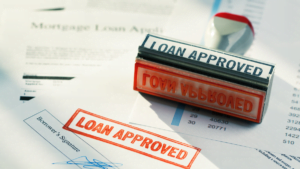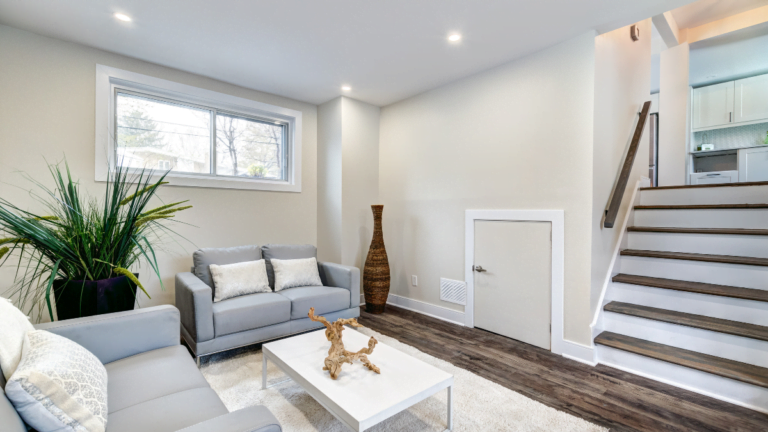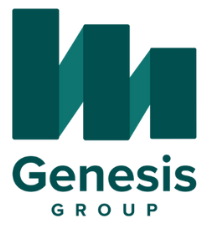Reading Time: 14 minutes
Exploring Fix-and-Flip Opportunities:

Welcome to the dynamic world of fix-and-flip investing in Canada, a realm where savvy investors turn vision into value. This method of real estate investment has gained significant traction, offering a unique pathway to profitability through property renovation and resale.
Overview of Fix-and-Flip in the Canadian Real Estate Market
Fix-and-flip involves purchasing properties, often those in need of repair or updating, and then renovating them to sell for a profit. In Canada’s diverse real estate market, this strategy presents an exciting opportunity. From bustling urban centers to quiet suburbs, each region offers distinct prospects for fix-and-flip projects. With the Canadian housing market’s historical resilience and growth, fix-and-flip investments can be particularly lucrative.
Potential Benefits of Fix-and-Flip Investments
The allure of fix-and-flip lies in its potential for quick and significant returns. By purchasing undermarket properties and enhancing their value through strategic renovations, investors can sell them at a higher price point. Key benefits include:
- Rapid Profitability: Unlike traditional real estate investments that yield returns over time, fix-and-flip can generate profits in a shorter timeframe.
- Market Flexibility: Successful fix-and-flip investors adapt to various market conditions, leveraging their renovation skills to enhance property value regardless of broader economic trends.
- Creative Fulfillment: This investment strategy allows for creative expression in remodeling and renovating, offering a hands-on approach to property transformation.

As we delve deeper into the intricacies of fix-and-flip financing, we will explore how to navigate this exciting investment terrain successfully. Whether you’re a seasoned investor or a newcomer to the real estate scene, understanding the fundamentals of fix-and-flip in the Canadian market is the first step toward realizing your property investment goals.
Understanding Fix-and-Flip Financing

In the dynamic realm of real estate investing in Canada, understanding fix-and-flip financing is crucial for investors looking to capitalize on this lucrative strategy. Unlike traditional mortgages used for long-term property ownership, fix-and-flip loans are designed specifically for short-term investment projects.
What are Fix-and-Flip Loans?
Fix-and-flip loans are financial tools tailored for real estate investors who purchase properties to renovate and sell quickly, usually within a year. Here’s how they stand apart from conventional mortgages:
- Purpose: These loans are intended for properties requiring renovation before being resold, not for long-term residence.
- Duration: They typically have shorter terms, often 12 months or less, aligning with the quick turnaround of fix-and-flip projects.
- Loan-to-Value Ratio: Lenders often focus on the property’s potential value post-renovation rather than its current market value.
- Interest Rates: Generally higher than traditional mortgages due to the short-term nature and higher risk associated with these loans.
Types of Fix-and-Flip Financing
Several financing options are available for fix-and-flip projects in Canada, each catering to different investor needs:
Bridge Loans: These are short-term loans that bridge the gap between immediate funding needs and longer-term financing solutions. They are ideal for investors who need quick cash to secure a property.
Hard Money Loans: Offered by private companies or individuals, these loans focus on the property’s value rather than the borrower’s creditworthiness. They are quicker to secure, making them popular among fix-and-flip investors.
Private Lenders: Individual investors or groups offering more flexible terms tailored to the project’s specifics. They can be an excellent option for investors with unique financing needs that traditional banks can’t meet.
Home Equity Lines of Credit (HELOC): For investors who already own property, a HELOC allows them to borrow against their existing home equity to finance new investments.

Understanding the nuances of these financing options is key to successful fix-and-flip investing. By selecting the right type of loan, Canadian real estate investors can effectively manage the financial aspects of their renovation projects, from acquisition to the final sale.
Eligibility and Requirements

When diving into the fix-and-flip market in Canada, understanding the eligibility criteria and necessary requirements for securing financing is crucial. These factors play a significant role in determining not only the likelihood of loan approval but also the terms of the loan itself.
Credit Score Considerations
Your credit score is a key factor lenders consider when assessing your loan application. Here’s what potential investors need to know:
- Minimum Score Requirements: While specific requirements can vary by lender, a good credit score typically increases your chances of securing favorable loan terms. Generally, a score above 650 is considered favorable, but some lenders may work with lower scores.
- Impact on Loan Terms: A higher credit score often translates to lower interest rates and better loan terms. It reflects your reliability as a borrower and can significantly affect the cost of your loan.
- Building Your Credit Score: If your credit score is lower than desired, focus on improving it before applying. This might involve paying down existing debts, making timely bill payments, and correcting any inaccuracies on your credit report.
The Importance of a Solid Investment Plan
Lenders are not just lending to a person; they’re investing in a project. Therefore, having a solid investment plan is essential:
- Detailed Renovation Plans: Clearly outline your renovation plans, including cost estimates and timelines. This demonstrates your project’s feasibility and your preparedness.
- Realistic Budget: Present a well-researched budget that accounts for all potential costs and unexpected expenses. It should be realistic and based on current market prices.
- Exit Strategy: Lenders want to know your plan for the property post-renovation. Whether it’s to sell immediately or rent out, having a clear exit strategy is crucial.
- Market Research: Show that you understand the market where you’re buying. This includes property values, neighborhood trends, and the potential for profit.

Meeting these eligibility criteria and preparing a comprehensive investment plan are vital steps toward success in the fix-and-flip market. By presenting yourself as a creditworthy borrower with a well-thought-out project, you increase your chances of securing the necessary financing to turn your investment dreams into reality.
Navigating the Application Process for Fix-and-Flip Loans

Securing a fix-and-flip loan in Canada involves a series of steps that require careful planning and attention to detail. Here’s a step-by-step guide to navigate the application process, ensuring you present a strong case to potential lenders.
Step-by-Step Guide to the Loan Application Process
Research Lenders: Start by researching potential lenders who offer fix-and-flip loans in Canada. This can include traditional banks, private lenders, and hard money lenders.
Prepare Your Financial Documents: Gather all necessary financial documents. This typically includes personal identification, proof of income, credit reports, and any existing mortgage statements.
Develop a Comprehensive Project Plan: Create a detailed plan for your fix-and-flip project, including budget estimates, timelines, and projected return on investment.
Complete the Loan Application: Fill out the loan application form provided by the lender. Ensure all information is accurate and complete.
Submit Property Details: Provide detailed information about the property you intend to purchase and flip, including the purchase price, location, and potential after-repair value (ARV).
Wait for Pre-Approval: After submitting your application, wait for the lender to process it and provide pre-approval, which indicates how much you can borrow.
Finalize the Loan Terms: Once pre-approved, discuss and finalize the loan terms with your lender, including the interest rate, repayment schedule, and any other conditions.
Close the Loan: Upon agreeing to the terms, close the loan, which typically involves signing various legal documents and paying any required fees.
Tips for a Successful Application
- Strong Credit Profile: Ensure your credit score is in good standing to increase your chances of loan approval.
- Clear Investment Strategy: Present a clear and well-researched investment strategy to convince lenders of the project’s viability.
- Accurate Financial Planning: Be meticulous with your financial planning. Overestimating costs is better than underestimating.
- Professionalism and Preparedness: Approach lenders professionally and be prepared to answer any questions about your project or financial status.

Navigating the application process for a fix-and-flip loan requires organization, clarity, and a solid understanding of your investment goals. By following these steps and tips, Canadian real estate investors can enhance their chances of securing the necessary financing to successfully execute their fix-and-flip projects.
Evaluating and Choosing the Right Property for Fix-and-Flip

When diving into the fix-and-flip real estate market in Canada, selecting the right property is crucial. This decision can significantly impact the profitability of your investment. Understanding the market and accurately assessing renovation needs are key steps in this process.
Market Research: The Foundation of a Successful Flip
Conducting in-depth market research is essential before purchasing a property for a fix-and-flip project. Here are some critical considerations:
- Location: Look for properties in areas with high demand for housing. This could mean burgeoning neighborhoods in cities like Toronto, Vancouver, or emerging markets in other provinces.
- Property Value Trends: Research local property value trends. Properties in areas with rising property values are typically more lucrative.
- Community and Amenities: Consider the local community, nearby amenities, schools, and public transportation, as these factors greatly appeal to potential buyers.
- Local Real Estate Market: Stay updated on the local real estate market conditions, including inventory levels and average time on market.
Canadian Real Estate Market Research
Assessing Renovation Needs: Calculating Costs and ROI
Once you’ve identified a potential property, evaluating its renovation needs is the next critical step:
- Inspection: Conduct a thorough inspection to identify all necessary repairs and renovations. Consider hiring a professional inspector for an unbiased assessment.
- Cost Estimation: Estimate the cost of renovations. It’s crucial to be as accurate as possible to avoid budget overruns. Include costs for materials, labor, permits, and a contingency for unexpected expenses.
- Return on Investment (ROI): Calculate the potential ROI. Compare the total investment cost (purchase price plus renovation costs) against the expected selling price post-renovation. Aim for properties that offer a high potential ROI.

Choosing the right property for a fix-and-flip involves careful market research and a detailed assessment of renovation needs and potential returns. By meticulously evaluating these factors, Canadian investors can make informed decisions that maximize their chances of a successful and profitable flip.
Financial Planning and Budgeting for Fix-and-Flip Investments

Financial planning and effective budgeting are the cornerstones of a profitable fix-and-flip investment in Canada. Understanding and managing your finances can make the difference between a successful flip and a financial misstep. Here’s how to approach this critical aspect.
Calculating Costs: The Financial Framework
A thorough breakdown of costs is essential to assess the feasibility and potential profitability of your fix-and-flip project. Consider these key financial components:
- Purchase Price: Determine the buying cost of the property. It’s crucial to negotiate a price that leaves room for profit after renovations.
- Renovation Costs: Estimate the renovation expenses, including materials, labor, permits, and design. Always add a buffer (around 10-20%) to cover unexpected costs.
- Carrying Costs: Account for ongoing expenses during renovations, such as property taxes, insurance, utilities, and loan interest.
- Resale Value: Research the market to estimate the potential resale value of the property post-renovation. Tools like the Canadian Real Estate Association’s data can provide valuable insights into local market trends.
- ROI Calculation: Calculate the expected return on investment by subtracting the total costs (purchase and renovation) from the anticipated resale value.
Budget Management: Maximizing Profit
Staying on budget is crucial for the success of a fix-and-flip project. Here are some tips to manage your renovation expenses effectively:
- Detailed Planning: Before starting, plan out each aspect of the renovation. Detailed planning helps in preventing overspending.
- Cost-effective Solutions: Look for ways to save money without compromising on quality. This might mean choosing materials that offer good value for money or adopting cost-saving renovation techniques.
- Track Expenses: Keep a close tab on your spending throughout the project. Use budget tracking tools or software to monitor expenses in real-time.
- Contingency Plan: Have a contingency plan for unexpected expenses. A financial buffer can help you tackle unforeseen costs without derailing your budget.

Effective financial planning and budget management are vital for the success of a fix-and-flip investment. By accurately calculating costs and meticulously managing your budget, you can enhance the profitability of your fix-and-flip projects in the Canadian real estate market.
Risks and Challenges of Fix-and-Flip Investments

Engaging in fix-and-flip investments in the Canadian real estate market can be lucrative, but it also comes with its set of risks and challenges. Understanding these potential pitfalls is crucial for investors to prepare and strategize accordingly.
Market Volatility: Navigating the Fluctuating Real Estate Market
The real estate market is subject to fluctuations influenced by various economic factors, which can impact the profitability of fix-and-flip investments:
- Market Dynamics: Real estate values can change due to economic conditions, interest rates, and regional developments. Investors must stay informed about the market trends in their target areas.
- Timing: The time taken to renovate and sell the property can coincide with a market downturn, affecting the expected profit margins.
- Exit Strategy: Having a well-thought-out exit strategy is vital. This may include a plan to rent out the property if the market is not favorable for selling.
Canadian Housing Market Reports
Unforeseen Expenses: The Hidden Costs of Renovations
One of the most significant risks in fix-and-flip investments is encountering unexpected expenses during the renovation process:
- Structural Surprises: Hidden issues like electrical problems, plumbing failures, or structural damages can emerge during renovations, leading to additional costs.
- Budget Overruns: Even with a well-planned budget, renovation projects can exceed expected costs due to price changes in materials, labor shortages, or extended project timelines.
- Permit and Regulation Compliance: Navigating building permits and regulations can be complex and sometimes result in additional expenses or delays.

Understanding these risks and challenges is a critical component of successful fix-and-flip investing. Investors need to be aware of the potential pitfalls and plan their projects with a buffer for unforeseen circumstances. By considering these factors, you can minimize risks and position your fix-and-flip venture for better success in the Canadian real estate market.
Success Stories: Canadian Fix-and-Flip Examples

The fix-and-flip market in Canada, particularly in bustling provinces like Ontario, is ripe with success stories. These examples not only inspire but also offer valuable lessons for aspiring investors. Here, we delve into a few real-life cases, including some facilitated by the expertise of The Genesis Group, an award-winning mortgage brokerage.
Case Study 1: The Downtown Toronto Transformation
- Background: A small, outdated bungalow in the heart of Toronto.
- The Flip: Extensive renovations including modernizing interiors, adding a second story, and landscaping.
- The Genesis Group’s Role: Assisted in securing a flexible renovation loan, offering guidance on market trends for resale.
- Outcome: Sold for 60% more than the purchase price, turning a substantial profit.
- Lesson: Understanding the local market and investing in key renovations can significantly boost property value.
Case Study 2: The Mississauga Makeover
- Background: A dated condo unit near Square One Shopping Centre.
- The Flip: Focused on cost-effective aesthetic upgrades like painting, fixtures, and minor kitchen updates.
- The Genesis Group’s Contribution: Provided advice on budget allocation and efficient financing options.
- Outcome: Quick turnaround with a sale at 30% above purchase price.
- Lesson: Strategic, budget-friendly renovations in high-demand areas can yield quick and profitable flips.
Case Study 3: The Hamilton Revival
- Background: A foreclosure property purchased at below-market value in Hamilton.
- The Flip: Complete overhaul including structural, electrical, and cosmetic updates.
- Expert Assistance: The Genesis Group navigated complex financing for a foreclosure property and advised on the resale strategy.
- Outcome: Transformed into a highly desirable property, generating a substantial return on investment.
- Lesson: Foreclosure properties, though challenging, can be lucrative with the right approach and expertise.

These real-life examples from Ontario showcase the potential of fix-and-flip investments in Canada. They underline the importance of market knowledge, strategic renovations, and expert financial guidance – areas where The Genesis Group has proven invaluable for many investors.
Turning Vision into Reality

As we reach the conclusion of our exploration into fix-and-flip financing, it’s time to reflect on the key elements that contribute to the success of such ventures. Fix-and-flip investments offer exciting opportunities in the Canadian real estate market, but they require careful planning, strategic financing, and a solid understanding of the market dynamics.
Recap of Key Points: The Blueprint for Success
To embark on a successful fix-and-flip journey, remember the following crucial steps:
- Understand the Market: Deep knowledge of local real estate trends and property values is vital.
- Select the Right Property: Choose properties with high potential for value addition.
- Secure Appropriate Financing: Explore various financing options like bridge loans, hard money loans, and the assistance of private lenders.
- Budget Effectively: Accurately estimate renovation costs and maintain a buffer for unforeseen expenses.
- Mitigate Risks: Be aware of market volatility and unexpected renovation challenges.
- Leverage Expertise: Consult with financial advisors and mortgage professionals to navigate the nuances of fix-and-flip financing.
The Genesis Group, with over a decade of experience in mortgage brokerage, stands as a valuable resource for those diving into the fix-and-flip market.
For those inspired to transform vision into profitable reality, the fix-and-flip path in the Canadian real estate landscape is an exhilarating one. It requires determination, financial savvy, and a willingness to learn and adapt.
- Research and Education: Continuously educate yourself about the real estate market and investment strategies.
- Professional Guidance: Seek advice from experienced professionals like The Genesis Group, who can offer tailored financial solutions and insights.

As you contemplate embarking on your fix-and-flip journey, remember that expert advice can be the key to unlocking your investment potential.
Reach out to The Genesis Group or similar financial experts for personalized advice on fix-and-flip financing. Their expertise can help turn your investment dreams into tangible success.
We invite you to share your own fix-and-flip experiences or any queries you might have in the comments below. Let’s foster a community of informed and successful real estate investors.
Glossary
- Fix-and-Flip: A real estate investment strategy where an investor purchases a property, renovates it, and then sells it for a profit.
- Bridge Loan: A short-term loan used until a person or company secures permanent financing or removes an existing obligation.
- Hard Money Loan: A loan from a private company or individual based on the property you’re using as collateral.
- Private Lender: An individual or private company that loans money, typically for real estate transactions, not affiliated with a bank.
- ROI (Return on Investment): A measure used to evaluate the efficiency of an investment, calculated by dividing net profit by the cost of the investment.
- Equity: The difference between the market value of a property and the amount still owed on its mortgage.
- Debt-to-Income Ratio: A personal finance measure comparing an individual’s debt payment to their overall income.
- Pre-Approval: A lender’s conditional agreement to lend a specific amount based on the borrower’s financial situation.
- Market Volatility: Refers to the fluctuation of prices within the real estate market over a short period.
- Renovation Costs: Expenses incurred during the process of improving a property.
FAQs
What is fix-and-flip financing?
Fix-and-flip financing refers to the funds that investors secure to purchase, renovate, and quickly sell a property at a profit. It often involves short-term loans like bridge or hard money loans.
How do I qualify for a fix-and-flip loan in Canada?
Qualification criteria can include a good credit score, a solid investment plan, and sometimes a down payment. Lenders will also assess the potential value of the property post-renovation.
Are fix-and-flip investments risky?
Yes, like any investment, fix-and-flip carries risks, including market volatility and unexpected renovation costs. Thorough market research and budget planning can help mitigate these risks.
Can I get a fix-and-flip loan with a low credit score?
While a high credit score is beneficial, some private lenders might still provide loans based on the property’s potential and your investment plan.
How long do I have to repay a fix-and-flip loan?
Repayment terms vary, but most fix-and-flip loans are short-term, typically ranging from six months to a few years.
Can I flip a property if I have no prior experience in real estate?
Yes, beginners can enter fix-and-flip investing, but it’s advisable to seek advice from experienced brokers like The Genesis Group and conduct thorough research.
How do I manage the renovation budget effectively?
Accurate cost estimation, contingency planning, and keeping track of all expenses are key to effective budget management in fix-and-flip projects.
Should I use a mortgage broker for my fix-and-flip financing?
Yes, a mortgage broker can provide valuable insights, access to various lending sources, and help in securing the best financing terms for your project.

